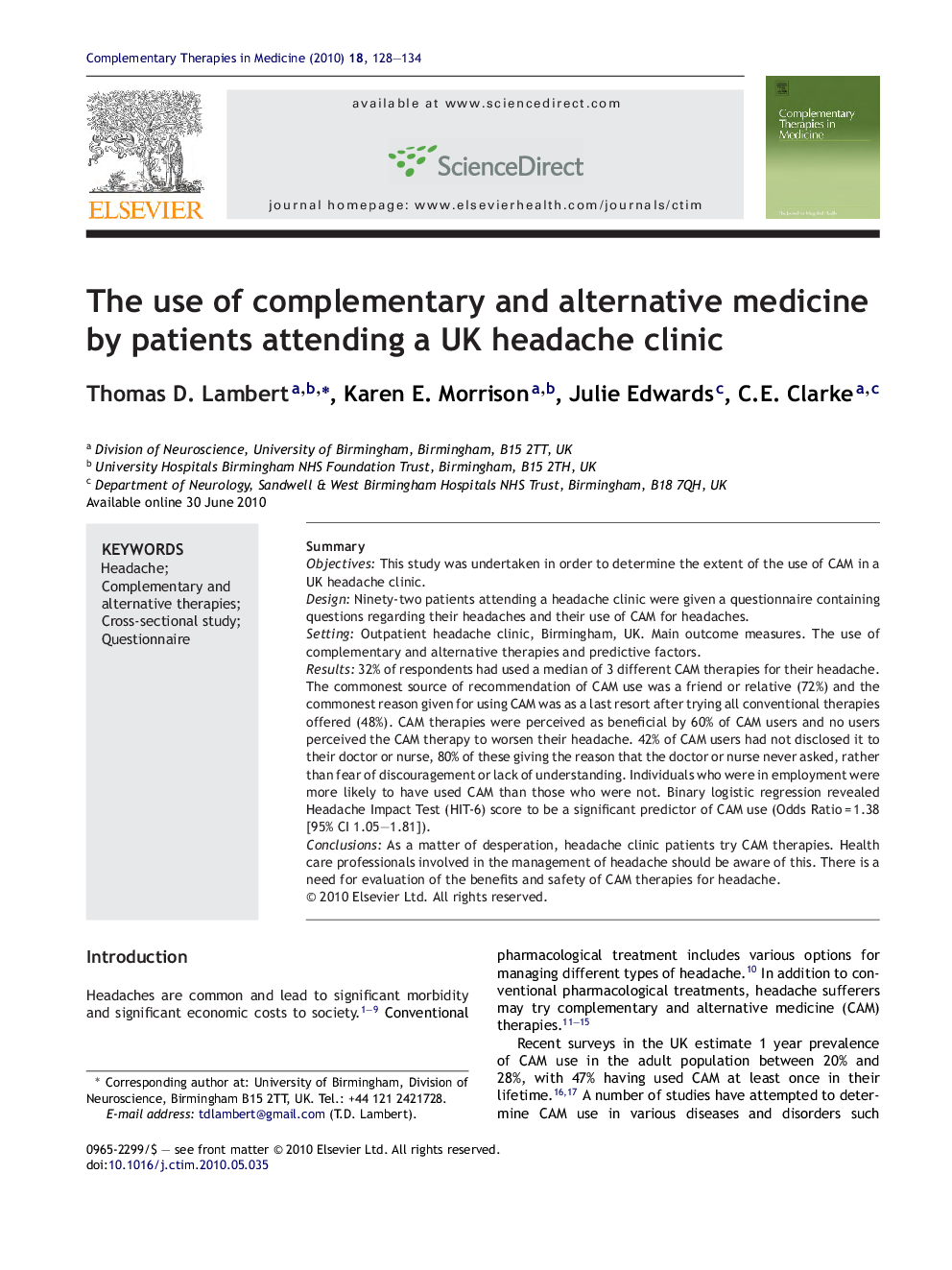| Article ID | Journal | Published Year | Pages | File Type |
|---|---|---|---|---|
| 2629029 | Complementary Therapies in Medicine | 2010 | 7 Pages |
SummaryObjectivesThis study was undertaken in order to determine the extent of the use of CAM in a UK headache clinic.DesignNinety-two patients attending a headache clinic were given a questionnaire containing questions regarding their headaches and their use of CAM for headaches.SettingOutpatient headache clinic, Birmingham, UK. Main outcome measures. The use of complementary and alternative therapies and predictive factors.Results32% of respondents had used a median of 3 different CAM therapies for their headache. The commonest source of recommendation of CAM use was a friend or relative (72%) and the commonest reason given for using CAM was as a last resort after trying all conventional therapies offered (48%). CAM therapies were perceived as beneficial by 60% of CAM users and no users perceived the CAM therapy to worsen their headache. 42% of CAM users had not disclosed it to their doctor or nurse, 80% of these giving the reason that the doctor or nurse never asked, rather than fear of discouragement or lack of understanding. Individuals who were in employment were more likely to have used CAM than those who were not. Binary logistic regression revealed Headache Impact Test (HIT-6) score to be a significant predictor of CAM use (Odds Ratio = 1.38 [95% CI 1.05–1.81]).ConclusionsAs a matter of desperation, headache clinic patients try CAM therapies. Health care professionals involved in the management of headache should be aware of this. There is a need for evaluation of the benefits and safety of CAM therapies for headache.
